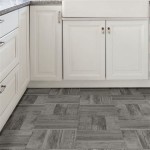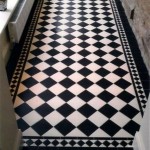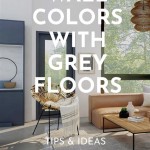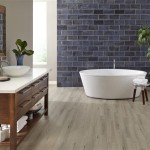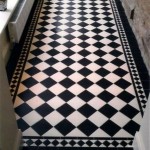Floor Carpets for Living Room: Enhancing Comfort and Style
Floor carpets play a significant role in defining the aesthetic and functional qualities of a living room. They contribute to the overall ambiance, provide comfort underfoot, and can even improve the acoustics of the space. Selecting the appropriate carpet for a living room requires careful consideration of various factors, including material, pile type, color, pattern, and budget. This article explores the key aspects of choosing floor carpets for living rooms, providing information to facilitate informed decisions.
Carpet Materials: A Spectrum of Options
The material composition of a carpet greatly influences its durability, feel, maintenance requirements, and cost. Different materials possess unique characteristics that make them suitable for various lifestyles and living room environments.
Wool: Wool carpets are renowned for their exceptional quality, luxurious feel, and natural resilience. Wool fibers are naturally crimped, providing excellent bulk and springiness, which helps to maintain the carpet's appearance over time. Wool is also naturally stain-resistant and flame-retardant, making it a safe and practical choice for living rooms. However, wool carpets tend to be more expensive than synthetic options and may require professional cleaning.
Nylon: Nylon is a synthetic fiber known for its exceptional durability and resistance to abrasion. Nylon carpets are highly resilient and can withstand heavy foot traffic, making them ideal for busy living rooms. They are also relatively easy to clean and maintain. Nylon carpets are available in a wide range of colors and styles, offering versatility in design. While not as naturally stain-resistant as wool, nylon fibers can be treated with stain-resistant finishes.
Polyester: Polyester carpets offer a softer feel than nylon at a more affordable price point. They are naturally stain-resistant and resist fading, making them a good option for living rooms that receive ample sunlight. However, polyester carpets are less durable than nylon and may crush more easily under heavy foot traffic. They are best suited for living rooms with moderate use.
Olefin (Polypropylene): Olefin is a synthetic fiber known for its excellent stain resistance and affordability. Olefin carpets are resistant to moisture and mildew, making them suitable for basements or living rooms in humid climates. However, olefin is less resilient than nylon and wool, and it can flatten easily under heavy foot traffic. It is also susceptible to oil-based stains. Olefin carpets are often used in Berber styles.
Triexta: Triexta is a relatively new synthetic fiber that combines the stain resistance of polyester with the durability of nylon. Triexta carpets are exceptionally stain-resistant and easy to clean, even with just water. They are also soft and comfortable underfoot. Triexta is a sustainable option as it is partially made from renewable resources.
Pile Type: Shaping Texture and Performance
The pile of a carpet refers to the density and construction of the fibers on the surface. Different pile types create distinct textures and affect the carpet's performance in terms of durability, comfort, and maintenance.
Cut Pile: Cut pile carpets feature fibers that are cut at the ends, creating a variety of textures depending on the twist and density of the fibers. Common types of cut pile carpets include:
Saxony: Saxony carpets have a dense, plush pile with a smooth, even surface. They offer a luxurious feel but can show footprints and vacuum marks easily. They are best suited for formal living rooms with low to moderate foot traffic.
Frieze: Frieze carpets have a highly twisted, textured pile that creates a casual, informal look. The twisted fibers help to hide footprints and vacuum marks, making them a practical choice for busy living rooms.
Shag: Shag carpets have a long, loose pile that creates a retro, 1970s-inspired look. They offer a soft, comfortable feel but can be challenging to clean and maintain. Shag carpets are best suited for low-traffic areas.
Textured Cut Pile: Textured cut pile carpets have varying pile heights and twists, creating a subtle, patterned appearance that camouflages dirt and footprints. They are a versatile option that can work in a variety of living room styles.
Loop Pile: Loop pile carpets feature fibers that are looped at the ends, creating a durable and stain-resistant surface. Common types of loop pile carpets include:
Berber: Berber carpets have a dense, level loop pile that creates a distinctive textured appearance. They are highly durable and stain-resistant, making them a practical choice for high-traffic areas. Berber carpets are often made from olefin or nylon.
Level Loop: Level loop carpets have loops of uniform height, creating a smooth, even surface. They are durable and easy to clean, making them a good option for busy living rooms.
Multi-Level Loop: Multi-level loop carpets have loops of varying heights, creating a textured, patterned appearance. They offer a more visually interesting alternative to level loop carpets.
Cut-and-Loop Pile: Cut-and-loop pile carpets combine both cut and looped fibers, creating a patterned or textured surface. They offer a balance of softness and durability and can be used to create a variety of design effects.
Color and Pattern: Defining the Room's Aesthetic
The color and pattern of a carpet can significantly impact the overall ambiance of a living room. Careful consideration of these elements is crucial for creating a cohesive and visually appealing space.
Color: Light-colored carpets can make a living room feel more spacious and airy, while dark-colored carpets can create a more intimate and cozy atmosphere. Neutral colors, such as beige, gray, and cream, are versatile and can complement a wide range of furniture and décor styles. Bold colors, such as red, blue, or green, can add personality and visual interest to a living room but should be used with caution to avoid overwhelming the space.
Pattern: Patterned carpets can add visual interest and depth to a living room. Small-scale patterns can create a subtle texture, while large-scale patterns can make a bold statement. Geometric patterns can add a modern touch, while floral patterns can create a more traditional and romantic feel. Consider the scale of the pattern in relation to the size of the living room. A large-scale pattern may be overwhelming in a small space, while a small-scale pattern may disappear in a large room.
When selecting a carpet color and pattern, consider the existing color palette and style of the living room. Choose a carpet that complements the furniture, walls, and other décor elements. Use color swatches and carpet samples to visualize how the carpet will look in the space before making a final decision.
In addition to the previously discussed points, several other factors warrant consideration when selecting a floor carpet for a living room. These include:
Padding: Carpet padding, also known as underlay, is a layer of cushioning placed beneath the carpet. It provides added comfort, extends the life of the carpet, and improves sound insulation. The type of padding should be selected based on the carpet type and the intended use of the living room. Thicker padding is generally recommended for high-traffic areas.
Installation: Proper carpet installation is essential for ensuring the carpet's longevity and performance. It is generally recommended to hire a professional installer to ensure that the carpet is properly stretched, seamed, and secured. Improper installation can lead to wrinkles, buckles, and premature wear.
Maintenance: Regular vacuuming is essential for maintaining the appearance and cleanliness of a carpet. Vacuum the carpet at least once a week, and more frequently in high-traffic areas. Promptly clean up spills and stains to prevent them from setting. Consider professional carpet cleaning every 12-18 months to remove embedded dirt and allergens.
Budget: Carpet prices can vary widely depending on the material, pile type, and brand. Determine a budget before beginning the shopping process and stick to it. Consider the long-term cost of carpet ownership, including cleaning and maintenance expenses.
Selecting the right floor carpet for a living room is an investment in comfort, style, and functionality. By carefully considering the material, pile type, color, pattern, and other relevant factors, one can choose a carpet that enhances the living room's aesthetic appeal and provides years of enjoyment.

Lochas Soft Plush Fluffy Rugs Modern Indoor Shaggy Area Rug For Bedroom Living Room Home Decorative Floor Carpet 5 X8 Camel

Carpet Rugs Living Room Carpets Online Upto 55 Off

Luxury Living Room Carpets Designer Carpet

Grey Living Room Rugs Small Extra Large Turkish Floor Carpets Soft Thick Carved

3d Carpet New Design Persian Style Printed Rug For Living Room Non Slip Floor And Price Made In Com

Finding The Best Carpet For Your Living Room Flooring Group

Handmade Home Floor Living Room Modern Custom Designs Big Area Mat Carpets And Rugs

Twinnis Soft Indoor Fluffy Area Rugs Shaggy Floor Carpets For Living Room Bedroom Nursery 6 X9 Light Tan

Carpet Can Be Chic Living Room Ideas For A Sensational Floor Groysman Construction Remodeling

White And Beige Round Floor Carpet Premium Braided Jute Mat Bedroom Kitchen Livingroom Circular Rugs Folkways Europe


